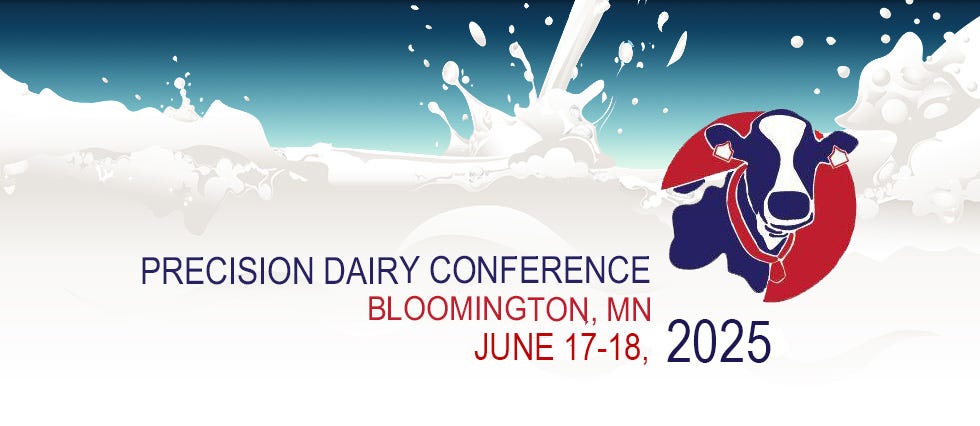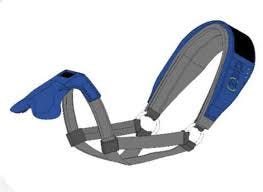Japanese cattle producers are using satellites to track cow location and activity
Test for sperm motility in low-oxygen conditions may help improve pregnancy rates.
Satellite data from a research project called “Space Cattle” is tracking radio waves emitted from a device around a cow’s neck to determine where she is in the pasture and her level of activity.
Read more here.
Early-bird deadline for Precision Dairy Conference is today
Summer is dairy tech's time to shine. The premier event for dairy technology is fast approaching. I'll be there, plus I'll be presenting.
Will you be there?
The Precision Dairy Conference, June 17-18, offers a unique opportunity to learn, connect and engage with industry professionals, dairy producers and experts at the forefront of dairy technology. This event is a neutral space where cutting-edge technologies converge, fostering insightful discussions and collaboration.
There are dairy producer panels to highlight how precision technology influences profitability and thought-provoking stage presentations.
Register now at www.precisiondairy.org to secure your spot at this must-attend event at the Hyatt Regency in Bloomington, MN.
Early bird registration ends today, June 6! Register soon for the best available rates.
Test for sperm motility in low-oxygen conditions may help improve pregnancy rates
Sperm motility is an important factor in a bull’s effectiveness at getting cows pregnant. New analysis and benchmarking of sperm motility in low-oxygen conditions such as those experienced in the reproductive tract of a cow could help producers improve their pregnancy rates.
Read more here.
University of Florida researchers are trialing a feeding supplement that consists of flaxseed and pea protein. It looks promising to decrease enteric methane emissions. Read more here.
Electronic ID to be required in the UK by 2027
Low-frequency electronic eartags will be required for all cattle in the United Kingdom by 2027. The British government says the requirement will help deal with animal disease outbreaks. Only cattle will be required to use electronic identification. Sheep and goats have yet to receive the same requirement.
Read more about the change here.
Company tracking enteric methane emissions takes aim at mitigation
Zelp has been using a cow wearable device for the muzzle to track cattle methane emissions. The company recently shared its plans to mitigate those emissions without the need for a feed additive. The company’s wearable would oxidize methane emissions as they escape from the cow, turning the methane into less potent greenhouse gas CO2 and harmless water vapor.
Read more about the audacious plan here.
U.S. milking equipment manufacturer becomes in-line milk analyzer distributor
BouMatic recently announced it is now a distributor for global brand Brolis’ Herdline milk analyzer. The device uses a laser to analyze milk for fat, protein and lactose as it flows through the milk line for each cow in a herd.
Read more about the device here.
Dairy profit projections from ZISK
Projected profitability for the next 12 months for two dairy herd sizes INCREASED in recent profit projections from ZISK.
ZISK is a profit projection smartphone app that tracks individual dairy farm profitability based on current CME board prices. Projections for a 1,000-cow dairy producing an average of 80 pounds of milk per cow and a 2,500-cow dairy producing an average of 85 pounds of milk per cow are provided.
12-month dairy farm profit projections (as of June 5, 2025):
1,000-cow dairy = $712,000 (UP about $121,000 since the beginning of May)
2,500-cow dairy = $2.532 million (UP about $319,000 since the beginning of May)







